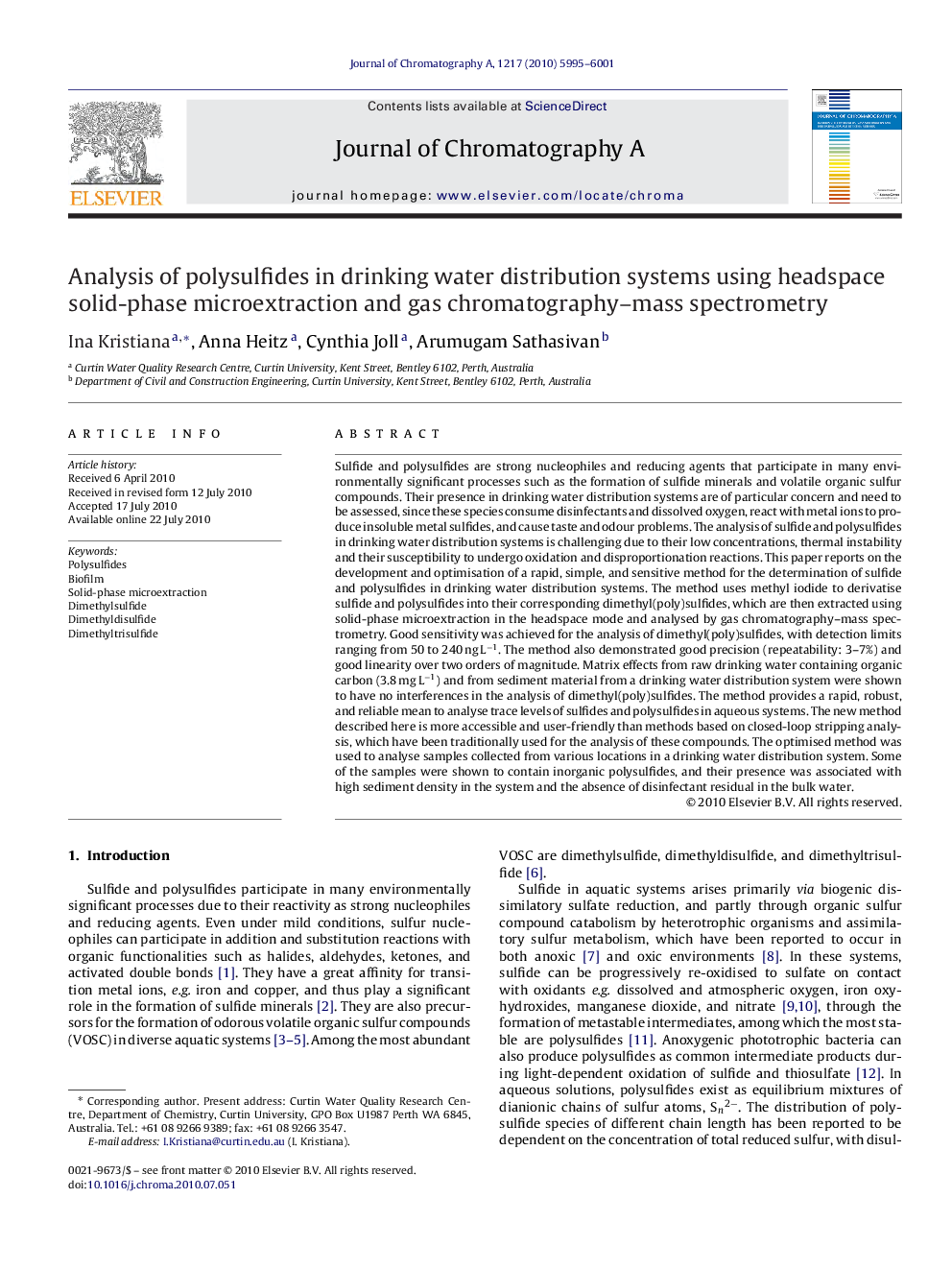| کد مقاله | کد نشریه | سال انتشار | مقاله انگلیسی | نسخه تمام متن |
|---|---|---|---|---|
| 1204794 | 965168 | 2010 | 7 صفحه PDF | دانلود رایگان |

Sulfide and polysulfides are strong nucleophiles and reducing agents that participate in many environmentally significant processes such as the formation of sulfide minerals and volatile organic sulfur compounds. Their presence in drinking water distribution systems are of particular concern and need to be assessed, since these species consume disinfectants and dissolved oxygen, react with metal ions to produce insoluble metal sulfides, and cause taste and odour problems. The analysis of sulfide and polysulfides in drinking water distribution systems is challenging due to their low concentrations, thermal instability and their susceptibility to undergo oxidation and disproportionation reactions. This paper reports on the development and optimisation of a rapid, simple, and sensitive method for the determination of sulfide and polysulfides in drinking water distribution systems. The method uses methyl iodide to derivatise sulfide and polysulfides into their corresponding dimethyl(poly)sulfides, which are then extracted using solid-phase microextraction in the headspace mode and analysed by gas chromatography–mass spectrometry. Good sensitivity was achieved for the analysis of dimethyl(poly)sulfides, with detection limits ranging from 50 to 240 ng L−1. The method also demonstrated good precision (repeatability: 3–7%) and good linearity over two orders of magnitude. Matrix effects from raw drinking water containing organic carbon (3.8 mg L−1) and from sediment material from a drinking water distribution system were shown to have no interferences in the analysis of dimethyl(poly)sulfides. The method provides a rapid, robust, and reliable mean to analyse trace levels of sulfides and polysulfides in aqueous systems. The new method described here is more accessible and user-friendly than methods based on closed-loop stripping analysis, which have been traditionally used for the analysis of these compounds. The optimised method was used to analyse samples collected from various locations in a drinking water distribution system. Some of the samples were shown to contain inorganic polysulfides, and their presence was associated with high sediment density in the system and the absence of disinfectant residual in the bulk water.
Journal: Journal of Chromatography A - Volume 1217, Issue 38, 17 September 2010, Pages 5995–6001